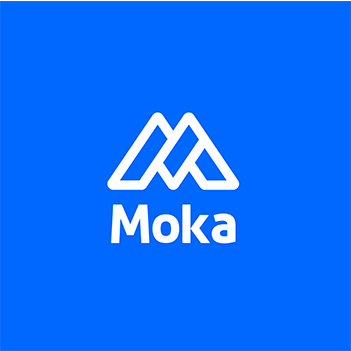Why New Hires Quit Within Their First Year and How to Prevent It

First-Year Attrition: Why New Hires Leave (and How to Fix It) poses a significant challenge for many organizations. Studies show that at least 38% of new hires leave within their first year, creating disruptions in productivity and morale. Many of these departures stem from preventable factors, such as poor onboarding or misaligned job expectations. By evaluating processes like onboarding and leadership behaviors, you can uncover the root causes of early turnover. For example, comparing tenure lengths of employees who experienced different onboarding methods can reveal actionable insights. Addressing these issues early helps you build a stronger foundation for long-term employee retention.
Key Takeaways
Create a clear onboarding plan to support new workers right away.
Explain job duties clearly during hiring to avoid confusion and build trust.
Start mentorship programs to guide and help new employees stay longer.
Build a friendly workplace that values everyone and encourages open talks.
Offer training and learning chances to inspire workers and keep them.
First-Year Attrition: Why New Hires Leave (and How to Fix It)
Poor or Incomplete Onboarding
A poor onboarding experience can set new hires up for failure. When onboarding lacks structure or clarity, employees may feel lost or undervalued. Research shows that 74% of employees describe their onboarding as boring, while 66% find it confusing. Without proper guidance, new hires struggle to adapt to their roles, leading to frustration and early exits.
To fix this, focus on creating a comprehensive onboarding program. Provide clear instructions, introduce team members, and outline expectations. Make the process engaging by incorporating interactive sessions or mentorship opportunities. Employees who feel supported during onboarding are more likely to stay and thrive.
Misaligned Expectations Between Role and Reality
When the job you promised doesn’t match the reality, employees feel deceived. This misalignment is a major contributor to first-year attrition. Studies reveal that 43% of employees leave because their day-to-day tasks differ from what was described during hiring. A table below highlights additional findings:
Study/Source | Key Finding |
|---|---|
Indeed | Job descriptions with vague terms lead to a 40% higher turnover rate. |
SHRM | 59% of employees leave within 18 months due to misalignment of expectations. |
IEEE USA | Discrepancies between job descriptions and reality lead to feelings of deception and high turnover. |
HighMatch | Misaligned expectations contribute to high early turnover rates. |
To address this, ensure job descriptions are accurate and detailed. During interviews, discuss the role’s challenges and opportunities honestly. Setting realistic expectations builds trust and reduces turnover.
Lack of Support and Mentorship
Support and mentorship play a critical role in retaining new hires. Employees without guidance often feel isolated and unsure of their performance. Research shows that retention rates for mentees are 72%, compared to just 49% for those without mentorship. However, many mentoring relationships fail prematurely, with up to 50% ending within months. This lack of sustained support can drive employees to leave.
To prevent this, establish a formal mentorship program. Pair new hires with experienced team members who can provide advice and encouragement. Regular check-ins between mentors and mentees help maintain the relationship and ensure long-term success.
Ineffective Management or Leadership
Poor management often drives employees to leave within their first year. Managers play a critical role in shaping the work environment. When leadership lacks effective communication or fails to recognize employee contributions, it erodes trust and motivation. Employees may feel undervalued, leading to disengagement and eventual turnover.
The table below highlights how ineffective management practices contribute to first-year attrition:
Factor | Description |
|---|---|
Ineffective management practices | Managers significantly influence employee satisfaction and turnover. Poor leadership styles and a lack of effective communication can erode trust and confidence within teams. A lack of recognition for employees' contributions can diminish their motivation and commitment. |
To address this, focus on leadership training. Equip managers with skills to communicate effectively, provide constructive feedback, and recognize achievements. Encourage open communication to build trust and foster a supportive environment. Strong leadership can significantly reduce first-year attrition rates.
Limited Growth Opportunities or Career Development
Employees often leave when they see no path for growth. A lack of career development opportunities signals stagnation, which discourages long-term commitment. Research shows that 82% of professionals would consider leaving their job if career opportunities are lacking. Additionally, a 2022 Pew Research Center survey linked high turnover rates to limited career development. One-third of surveyed individuals cited this as a major reason for leaving.
82% of professionals would consider leaving their job if career opportunities are lacking.
A 2022 Pew Research Center survey found that high turnover rates are linked to limited career development opportunities.
33% of surveyed individuals cited a lack of career growth opportunities as a major reason for leaving.
To prevent this, invest in employee development. Offer training programs, mentorship opportunities, and clear career paths. Regularly discuss growth goals with employees to show your commitment to their success. When employees see opportunities for advancement, they are more likely to stay and contribute to the organization.
How to Build a Strong Foundation for New Hires

Create a Comprehensive and Structured Onboarding Program
A structured onboarding program lays the groundwork for a successful employee journey. Without it, new hires may feel overwhelmed or disconnected. Research highlights the importance of onboarding in improving retention and productivity.
Evidence Type | Statistic/Outcome |
|---|---|
New Hire Productivity Increase | 50% boost in productivity reported by organizations |
Retention Rate Increase | 25% increase in retention rates with structured onboarding |
Turnover Due to Poor Onboarding | 20% of turnover occurs within the first 45 days |
To create an effective program, focus on clarity and engagement. Provide a detailed roadmap for the first 90 days, including role-specific training and introductions to team members. Use interactive tools like videos or workshops to make the process engaging. Regular check-ins during onboarding ensure that new hires feel supported and valued. A well-structured program not only boosts confidence but also reduces early turnover.
Set Clear and Realistic Expectations During Recruitment
Attrition often begins during the hiring process. Misaligned expectations can lead to frustration and early exits. Nearly 30% of entry-level employees leave within the first 90 days due to unrealistic job expectations.
Misaligned expectations and poor cultural fit contribute to high turnover rates.
Setting clear expectations prevents misunderstandings that lead to early exits.
Providing accurate information about job descriptions and company culture is crucial.
You can prevent this by being transparent during recruitment. Clearly outline the responsibilities, challenges, and growth opportunities of the role. Share insights about the company culture to help candidates assess their fit. When you set realistic expectations, new hires feel more prepared and confident in their decision to join your organization.
Foster a Positive and Inclusive Company Culture
A strong company culture is essential for retaining employees. When employees feel included and valued, they are more likely to stay. Studies show that organizations with inclusive cultures are twice as likely to exceed financial targets and experience 33% less turnover.
Study Source | Key Findings |
|---|---|
Deloitte | Organizations with inclusive cultures are twice as likely to exceed financial targets and eight times more likely to achieve better overall business outcomes. |
Gallup | Companies with highly engaged employees outperform competitors by 147% in earnings per share and experience 33% less turnover. |
Gallup | Organizations that prioritize strong workplace culture see a 30% increase in employee engagement levels, leading to a 40% decrease in turnover. |
To foster inclusivity, encourage open communication and celebrate diversity. Implement initiatives like flexible work hours or team-building activities to strengthen bonds. When employees feel connected to the company’s mission and values, they are more engaged and committed to their roles.
Provide Ongoing Training and Development Opportunities
Ongoing training and development opportunities are essential for retaining new hires. Employees want to grow and improve their skills. When they feel stagnant, they often look for opportunities elsewhere. Studies show that 83% of workers who resigned felt stuck in their roles. Additionally, 70% of employees would leave for an employer that invests in their development. Providing continuous learning opportunities shows your commitment to their success and helps reduce turnover.
Metric | Evidence |
|---|---|
Employee Growth | |
Employer Investment | 70% of employees would leave for an employer that invests in training. |
Turnover Drivers | Lack of advancement opportunities is a key driver of turnover. |
E-learning Impact | E-learning can increase retention rates by 25% to 60%. |
Organizational Concern | 90% of organizations prioritize learning opportunities to improve retention. |
Training programs also benefit your organization. A case study revealed that companies offering comprehensive training achieved a 218% higher income per employee and a 24% higher profit margin. Employees who feel equipped with the right skills are more productive and engaged. This creates a win-win situation for both the employee and the company.
To implement effective training, focus on creating personalized learning paths. Offer a mix of in-person workshops, e-learning modules, and hands-on projects. Regularly assess skill gaps and provide resources to address them. Encourage employees to set development goals and track their progress. When you invest in their growth, they feel valued and motivated to stay.
Tip: Use technology to make training accessible and engaging. Platforms like Learning Management Systems (LMS) allow employees to learn at their own pace while tracking their achievements.
By prioritizing ongoing development, you create a culture of growth. Employees who see a future with your company are more likely to remain loyal and contribute to its success.
The Role of Leadership in Preventing First-Year Attrition

Building Trust Through Open Communication
Leadership begins with trust, and trust thrives on open communication. When you create an environment where employees feel heard, they are more likely to stay engaged and committed. Transparency plays a key role in building this trust. Sharing information about company goals, challenges, and successes shows employees that their contributions matter.
Research supports this approach. For example, Google’s Project Aristotle found that psychological safety, driven by mutual trust, reduces turnover by up to 50%. Similarly, Buffer’s transparency practices, such as sharing salary structures, have significantly improved employee retention.
Evidence Source | Key Findings |
|---|---|
Google Project Aristotle | Psychological safety reduces turnover by up to 50%. |
Buffer's Transparency Approach | Transparency fosters loyalty and enhances retention rates. |
By fostering open communication, you create a workplace where employees feel valued and secure. This sense of belonging encourages them to invest in their roles and the organization.
Recognizing and Rewarding Contributions Early
Recognition is a powerful tool for retention. Employees who feel appreciated are more likely to stay motivated and loyal. Studies show that 80% of employees would work harder if their efforts were better recognized. Companies with strategic recognition programs also experience 31% lower voluntary turnover rates.
Employees who feel unrecognized are twice as likely to leave their jobs.
Recognition fosters loyalty by making employees feel valued.
Recognized employees are less likely to seek opportunities elsewhere.
You can implement recognition programs by celebrating milestones, offering rewards, or simply acknowledging achievements in team meetings. Early recognition sets a positive tone and reinforces the value of each employee’s contributions.
Addressing Concerns and Feedback Proactively
Proactive leadership involves addressing concerns before they escalate. Regularly seeking feedback and acting on it demonstrates that you value employee input. This approach not only improves engagement but also reduces attrition rates.
Metric | Impact on Attrition Rates |
|---|---|
Turnover Rates | |
Employee Engagement Scores | Higher scores correlate with lower attrition |
Retention Rates | Improved through regular feedback and support |
Productivity Levels | Increased when employees feel valued and supported |
By addressing concerns early, you create a culture of trust and support. Employees who feel heard are more likely to stay, contributing to a stable and productive workforce.
Continuous Support for Long-Term Retention
Establish Regular Check-Ins and Feedback Mechanisms
Regular check-ins and feedback create a supportive environment where employees feel valued. When you provide consistent opportunities for communication, employees can share their concerns and celebrate their achievements. This fosters trust and strengthens their connection to the organization.
Research highlights the impact of structured feedback systems. For example:
Study Source | Key Findings |
|---|---|
Journal of Applied Psychology | Regular feedback leads to higher employee engagement and lower turnover rates. |
Gallup | Organizations that sought feedback saw a 14.9% increase in productivity and employees were 4.6 times more likely to perform at their best. |
SHRM | Structured feedback mechanisms resulted in a 15% decrease in turnover rates. |
To implement this, schedule one-on-one meetings with employees to discuss their progress and address challenges. Use these sessions to set goals and provide actionable advice. Employees who feel heard and supported are more likely to stay committed to their roles.
Offer Career Development and Growth Opportunities
Employees value opportunities to grow. When they see a clear path for advancement, they feel motivated to stay. Studies show that 76% of employees actively seek career expansion, and 86% would switch jobs for better growth opportunities. Companies that invest in development see a 34% higher retention rate.
60% of employees prefer professional development opportunities over regular pay raises.
53% say access to learning opportunities would encourage them to stay longer.
You can support career growth by offering training programs, mentorship, and leadership development initiatives. Encourage employees to set career goals and provide resources to help them achieve these milestones. When you prioritize their growth, employees feel valued and loyal to your organization.
Monitor and Improve Employee Engagement Metrics
Tracking engagement metrics helps you identify areas for improvement. Metrics like turnover rate, absenteeism, and productivity provide insights into employee satisfaction and commitment. For example:
Metric | Description |
|---|---|
Turnover Rate | Reflects the percentage of employees leaving the organization. |
Employee Retention Rate | Measures how well the organization retains its workforce. |
Absenteeism Rate | Tracks absences, which can indicate disengagement. |
Productivity Metrics | Shows how engaged employees are through their output and quality of work. |
Employee Satisfaction | Highlights overall happiness, which influences retention. |
Use these metrics to guide your engagement strategies. For instance, if absenteeism rises, investigate potential causes like workload or morale. By addressing these issues, you can create a more engaged and committed workforce.
Tip: Regularly review engagement data to adapt your strategies and ensure employees remain motivated and connected.
Retaining new hires starts with addressing their needs from day one. Structured onboarding, strong leadership, and continuous support create a foundation for long-term success. For example, employees are over 50% more likely to stay after structured onboarding, and retention rates exceed 80% after the first year.
Statistic Description | Value |
|---|---|
Improvement in retention due to effective onboarding | 52% |
Likelihood of staying for at least 3 years with good onboarding | 69% |
By investing in these strategies, you foster satisfaction and loyalty, ensuring your team thrives.
FAQ
What is the most common reason new hires quit within their first year?
The most common reason is poor onboarding. Without clear guidance, new hires feel lost and undervalued. This leads to frustration and early exits. A structured onboarding program helps them adapt quickly and feel supported.
How can you improve employee retention during the first year?
Focus on clear communication, structured onboarding, and ongoing support. Provide mentorship, set realistic expectations, and offer growth opportunities. These steps build trust and engagement, reducing turnover.
Why is mentorship important for new hires?
Mentorship provides guidance and support. It helps new hires navigate their roles and feel connected to the team. Employees with mentors are more likely to stay and succeed in their positions.
How does company culture affect retention?
A positive and inclusive culture makes employees feel valued and engaged. When employees connect with the company’s mission and values, they are more likely to stay and contribute.
What role does leadership play in reducing first-year attrition?
Leadership sets the tone for the workplace. Open communication, recognition, and proactive feedback from leaders build trust and loyalty. Strong leadership creates a supportive environment that encourages employees to stay.
Tip: Regularly check in with new hires to address concerns early. This shows you care about their experience and helps prevent turnover.
See Also
Enhancing Recruitment Efficiency With MokaHR's Management Tools
Identifying And Solving Common Recruitment Automation Challenges
Enhance Your Hiring Process Using MokaHR's Monitoring Features
Improving Employee Satisfaction With MokaHR's Talent Solutions
From recruiting candidates to onboarding new team members, MokaHR gives your company everything you need to be great at hiring.
Subscribe for more information

